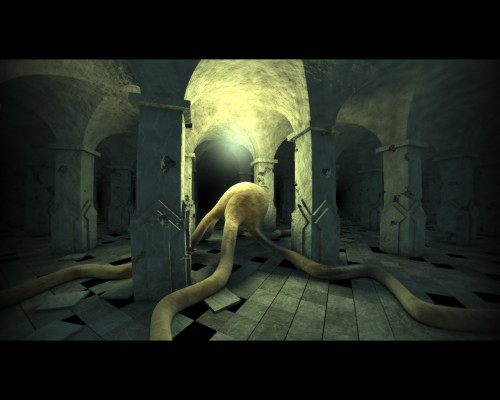You Can Stop Programming Now
The above is puls, a 256-byte intro by ?r?ola. It’s basically a raytracer with screen space ambient occlusion (which makes it so much realistic and cooler). While tube — which I think was the best 256-byte intro until now (when design and code are judged together) — also did raytracing of a cylinders, and after that many other intros did similar tracing of more complex surfaces, puls simply crushes all of them with objects that are formed by multiple plane surfaces (e.g. a cube would be a combination of six intersecting planes), a very nice color palette and that delicious ambient occlusion.
Thinking it out in C and sketching it out in asm took about a week, byte crunching took another one… that’s like forty hours of full focus and eighty of playing.
It’s also really, really slow which is the only minus especially because you can’t run 16-bit executables on Windows 7, so you have to use DOSBox to watch it (or, use a boot floppy to run it or something). There’s now a Windows port including a screensaver, see the Pouet.net page for more. A big thank you to nordak5 who was kind enough to upload a video on Youtube.
?r?ola has also included source code with the binary that you can find over here. That said, I’ll be deleting all my own source code since perfection has finally been achieved and there is no need for programmers anymore.
